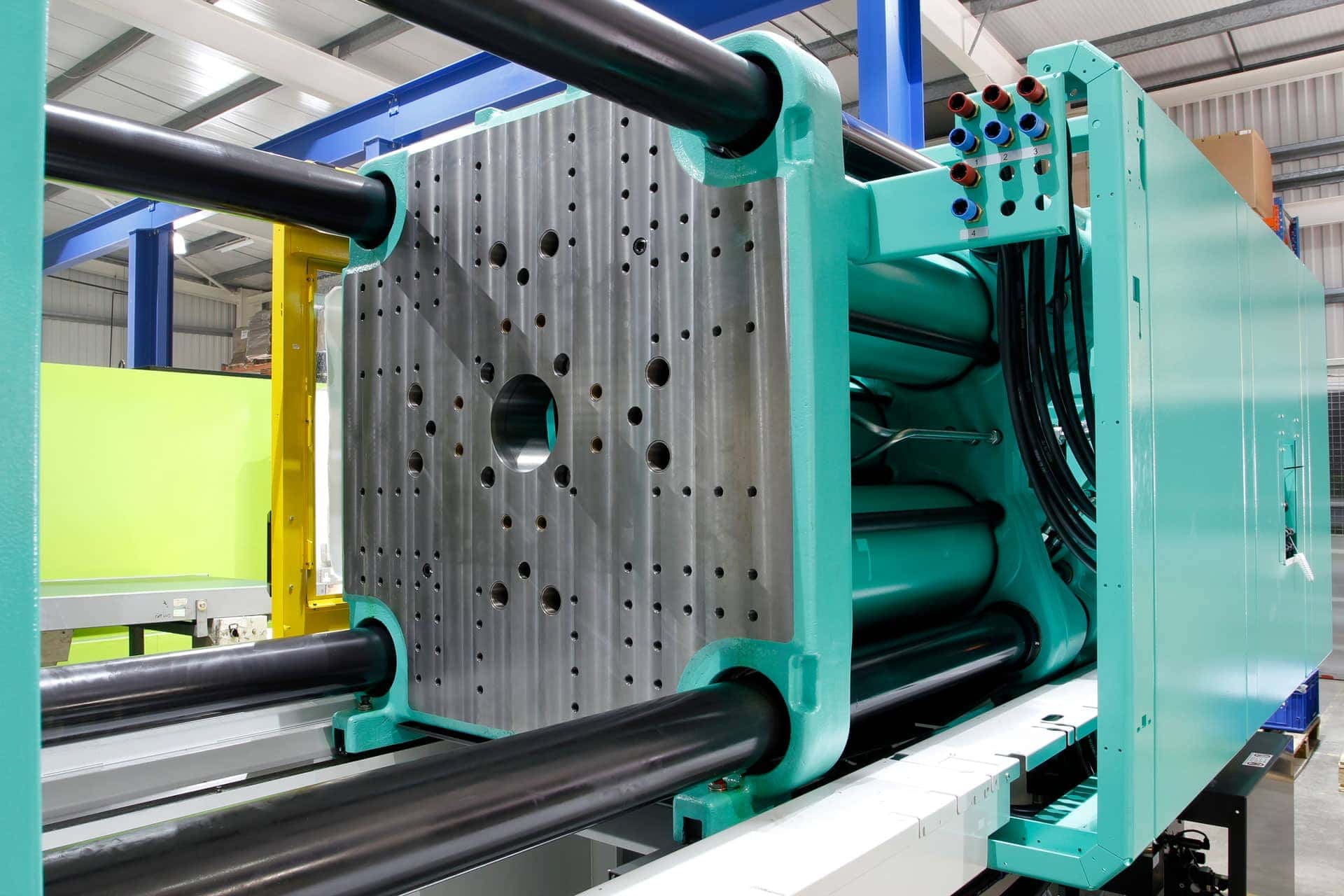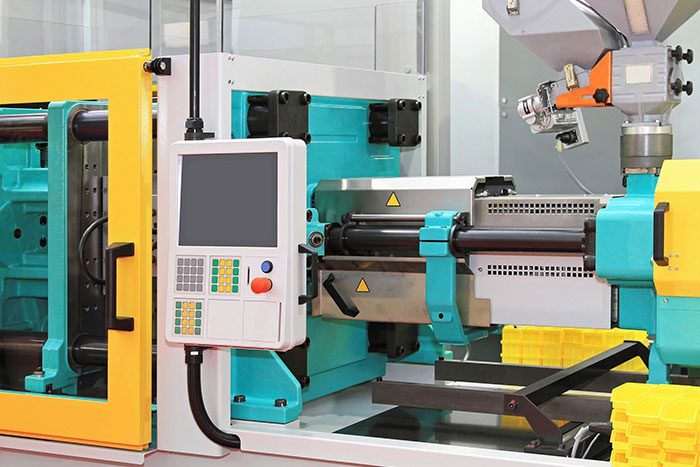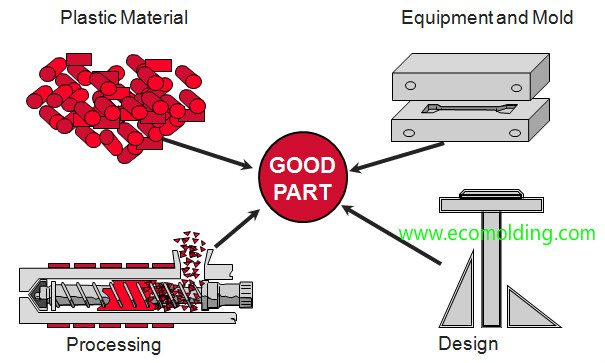Why Plastic Injection Molding Is Necessary for Precision and Resilience
Why Plastic Injection Molding Is Necessary for Precision and Resilience
Blog Article
Understanding the Basics of Plastic Shot Molding Processes
Plastic shot molding offers as a foundation of modern production, supplying a systematic strategy to generating intricate components with accuracy. Checking out these vital components could reveal exactly how even small changes can lead to significant renovations in manufacturing end results, increasing inquiries concerning the capacity for advancement in this recognized procedure.
What Is Plastic Shot Molding?
Plastic injection molding is an extensively made use of manufacturing procedure that transforms thermosetting and polycarbonate materials into exact and complex forms. This technique is preferred for its capability to generate high volumes of identical components with remarkable accuracy, making it an important approach in numerous sectors, consisting of auto, durable goods, and medical tools.
The process includes thawing the picked plastic material and injecting it right into a mold and mildew under high pressure. The mold and mildew, created to the specs of the preferred part, enables the molten plastic to materialize as it strengthens and cools. When the material has solidified, the mold and mildew is opened, and the completed component is expelled.
Plastic injection molding offers several benefits, consisting of reduced waste, consistency in manufacturing, and the capacity to integrate elaborate styles that may be challenging with other manufacturing techniques. Furthermore, it supports a wide range of products, each giving unique residential or commercial properties that can be customized for certain applications. As sectors continue to introduce, plastic injection molding continues to be at the forefront, allowing the growth of innovative products that meet advancing consumer demands.
The Injection Molding Process
The shot molding process is an advanced strategy that involves several crucial phases to produce top quality plastic components. Originally, plastic pellets are fed right into a warmed barrel where they are merged a viscous liquid. This molten plastic is then infused under high pressure right into a precision-engineered mold and mildew, which shapes the material into the desired kind.
When the mold and mildew is filled up, the plastic is allowed to cool down and solidify, taking the form of the mold and mildew dental caries. Air conditioning time is vital, as it impacts the cycle time and the final residential or commercial properties of the molded part. After enough air conditioning, the mold and mildew opens, and the completed component is ejected utilizing ejector pins.

Materials Made Use Of in Shot Molding
Numerous materials can be made use of in the shot molding process, each offering unique properties that satisfy specific applications. One of the most generally made use of products include thermoplastics, thermosetting plastics, and elastomers.

Thermosetting plastics, like epoxy and phenolic materials, go through a chemical modification during the curing process, causing a rigid, inflexible structure. These materials are suitable for applications needing high warm resistance and architectural stability, frequently made use of in electrical insulators and automotive parts.
Elastomers, consisting of silicone and rubber-based products, give adaptability and strength. Their unique properties make them ideal for applications that demand elasticity, such as gaskets and seals.
Furthermore, specialty materials like bio-based plastics and compounds are gaining grip for their environmental benefits and improved performance characteristics, broadening the range of shot molding applications in various markets. Comprehending the properties of these products is vital for selecting the appropriate kind for details tasks.
Advantages of Injection Molding
Injection molding sticks out as a very reliable production procedure that offers numerous benefits for creating complicated parts with read precision. Among one of the most significant benefits is the capability to develop elaborate designs that would be tough or difficult to achieve with various other approaches (Plastic Injection Molding). The procedure enables for detailed features and tight resistances, making certain premium parts
Furthermore, shot molding is understood for its quick production abilities, making it an ideal selection for high-volume production. As soon as the mold is created, parts can be created promptly, decreasing preparations and enhancing overall performance. This performance not just decreases manufacturing expenses but additionally offers an affordable side in the Click Here market.
The convenience of products made use of in injection molding additionally improves its appeal. A wide variety of thermoplastics and thermosetting polymers can be employed, allowing makers to pick materials that ideal satisfy their details needs, including strength, flexibility, and heat resistance.
Moreover, the process lessens waste, as excess material can frequently be recycled and recycled. This sustainability element contributes to a minimized environmental effect, making shot molding a responsible manufacturing option. Generally, the advantages of shot molding make it a favored technique for lots of industries.
Aspects Affecting Product Quality
While numerous elements can affect item high quality in shot molding, comprehending these components is crucial for attaining optimum outcomes. Trick facets consist of product option, processing parameters, and mold and mildew layout.
Product choice plays a vital role, as different polymers show unique homes that impact flowability, strength, and thermal stability. Inadequate material option can lead to flaws such as warping or incomplete dental filling.
Processing parameters, including cycle, stress, and temperature level time, have to be meticulously regulated. Variations in these setups can result in inconsistencies in part dimensions and surface coating. For example, excessively high temperatures may trigger deterioration of the polymer, while poor stress can result in short shots.
Mold and mildew layout is just as crucial, as it determines the flow of the molten plastic and the cooling process. Badly developed mold and mildews might cause irregular cooling prices, resulting in residual anxieties and dimensional mistakes.

Conclusion
To conclude, plastic injection molding functions as a critical manufacturing process that makes it possible for the effective production of top notch elements. Mastery of the injection molding process, consisting of the understanding of products and the influence of different variables on item high quality, is essential for attaining optimum results. The benefits of this approach, such as cost-effectiveness and design adaptability, additional highlight its relevance across several industries, solidifying its condition as a favored option for high-volume production.
Plastic shot molding serves as navigate here a foundation of modern-day production, offering a systematic method to generating complicated elements with accuracy.Plastic injection molding uses numerous benefits, including reduced waste, consistency in manufacturing, and the ability to incorporate intricate styles that might be testing with other producing techniques (Plastic Injection Molding). As industries proceed to innovate, plastic injection molding stays at the forefront, enabling the development of sophisticated products that fulfill evolving customer demands
The shot molding process is an advanced method that includes a number of vital phases to generate high-quality plastic elements.In final thought, plastic injection molding serves as a vital manufacturing procedure that allows the reliable production of top notch elements.
Report this page